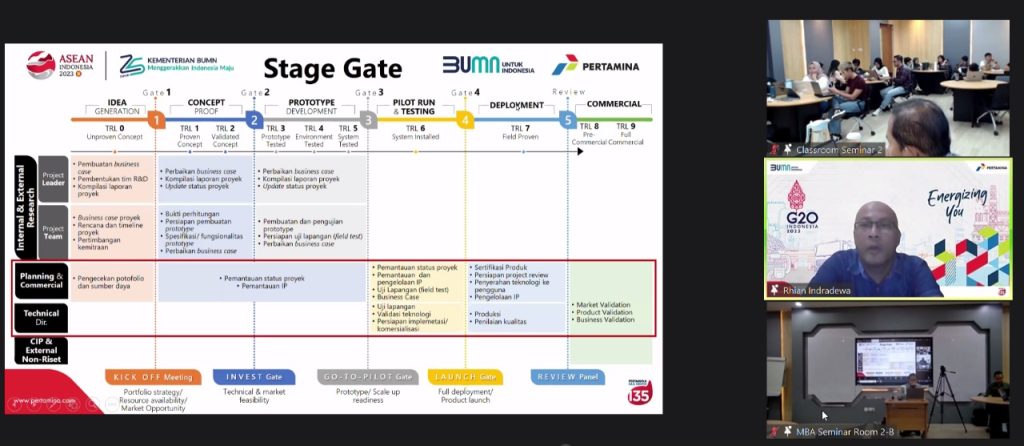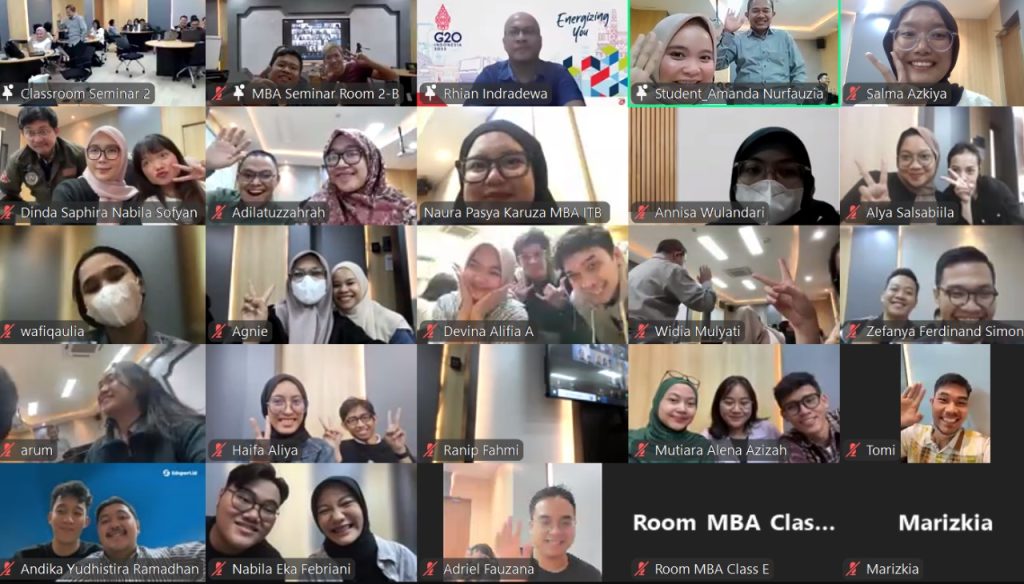The framework for technological innovation at PT Pertamina includes global technology, energy usage and policy trends, Indonesia’s future energy potential, and the company’s strategic priorities. The research and technology application strategy at Pertamina also focuses on prioritized research topics, research-supporting infrastructure, human resource capabilities, and business processes to manage and drive innovation.
Dr. Ir. Rhian Indradewa, S.T., MSM., IPU., CRP., CSRS., a technology advisor at PT Pertamina, shared insights into the company’s innovation strategies as a guest lecturer for the Innovation, Technology, and Entrepreneurship Management course in the Master of Business Administration program SBM ITB on Wednesday (30/10). The lecture aimed to improve students’ understanding of how innovation management is implemented in large-scale companies like Pertamina.
Dr. Rhian highlighted that Pertamina’s innovation efforts include collaborative research in strategic areas, which is vital in efficiently bridging gaps in business competency. The company’s collaborative focus is guided by three core pillars: technological innovation, technological development, and technological solutions. Each of these depends on the feasibility and business attractiveness of the proposed projects.

According to Dr. Rhian, Pertamina’s vision is to accelerate the energy transition through collaboration and investments in energy-sector start-ups. This vision supports innovations in digital energy solutions, strengthens the company’s operational businesses, and facilitates energy transitions.
Dr. Rhian also explained the structured process companies can follow to identify opportunities for creating new digital businesses, which includes stages of innovation, incubation, and commercialization. At Pertamina, key elements of business processes—such as planning, commercialization, and technical aspects—are underpinned by the quality of the business portfolio, resources, ongoing projects, project quality assessments, and the validation of products, businesses, and markets.
The company accelerates technology adoption to maximize its business operations and build low-carbon initiatives. Pertamina’s approach to technology acceleration involves mapping the value chain, setting business priorities, assessing technology usage, and evaluating business technology adoption schemes.
Dr. Rhian elaborated on Pertamina’s investment process, which involves project design, team building, technical and market analysis, legal and financial evaluations, and stakeholder management. Pertamina ensures a thorough review process for investment decisions by aligning company resources with stakeholder expertise. This alignment helps determine investment strategies and manage risks to enhance the value of the company’s ventures.
Regarding venture capital activities, Dr. Rhian emphasized the importance of adhering to investment policies and risk management during the investment cycle. Pertamina ensures that investment returns exceed initial values, reflecting prudent financial planning and strategic execution.
Additionally, Dr. Rhian discussed the valuation methods used by Pertamina, such as the asset, income, and market approaches, to assess business investments. These evaluations help estimate the value of the company’s business and securities. In some cases, technical reviews are necessary to ensure the accuracy of long-term business valuations and determine their potential to enhance the company’s overall business value.





